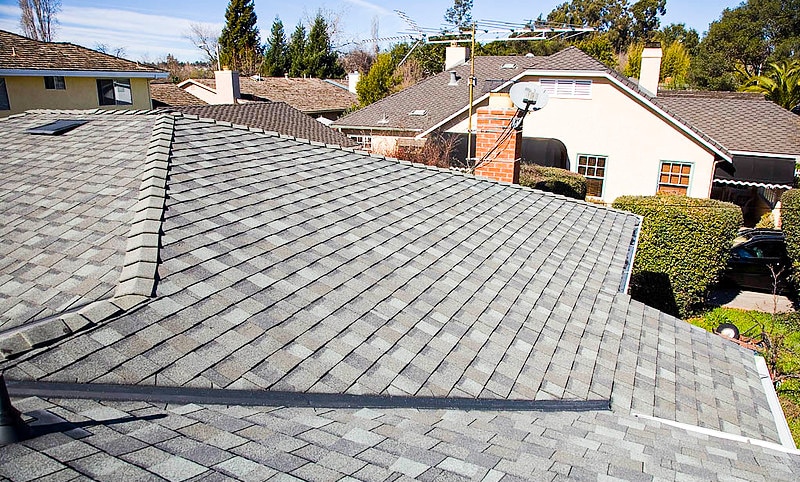Providing adequate ventilation in an attic of a hip roof home in Phoenix is an important task. It will help to regulate the temperature and humidity inside, as well as protect against damage caused by excess heat or moisture accumulation. This article provides detailed guidance on how to achieve proper ventilation in this type of housing structure.
The need for adequate attic ventilation has become increasingly apparent in hot climates such as Phoenix due to the extreme temperatures experienced during summer months. Not only does it help to protect building materials from damages caused by excessive heat but also helps reduce energy consumption associated with air conditioning costs. Furthermore, properly ventilating attics can reduce mold growth, which occurs when high levels of humidity are trapped within confined spaces.
Roof Structure Overview
Hip roof homes in Phoenix are a popular choice due to their distinctive design and ability to provide additional living space. The structure of these roofs consists of four sloping sides that come together at the peak, creating an inverted pyramid shape. This type of roof offers several advantages for homeowners, including increased energy efficiency and better protection against harsh weather conditions. However, it can also pose challenges when it comes to providing ventilation in the attic.
Fortunately, there are several solutions available for addressing this issue. These range from installing soffit vents along the eaves or ridge vents near the top of the roofline to using powered attic fans or turbines with adjustable blades that help draw air out of the attic space. Whichever method is chosen, proper installation and maintenance will be essential for effective performance over time.
Benefits Of Ventilation
Attic ventilation is essential for the well-being of a home in Phoenix, Arizona. It helps to control temperature levels and reduce moisture build-up inside the attic space. Additionally, it can help prevent ice dams from forming on the roof during winter due to melting snow or ice. By providing adequate airflow through the attic area, homeowners can also protect their investments by preventing damage caused by mold and mildew growth as a result of excessive humidity.
Ventilation can also be beneficial in helping extend the life of your roofing materials and shingles by reducing heat buildup that may cause premature deterioration. Proper air circulation throughout an attic space will minimize condensation which could lead to rot, warping and other forms of damage if left unchecked. In addition, proper ventilation reduces energy costs by allowing hot air to escape out through vents at higher temperatures than they came in. This keeps insulation dryer and more efficient while minimizing cooling expenses during summer months in Phoenix’s desert climate.
Types Of Attic Ventilation
Ventilating an attic on a hip roof home in Phoenix requires understanding the types of ventilation available. There are two main categories: natural and mechanical. Natural methods allow air to enter and exit the attic through openings that use wind or temperature differences, while mechanical systems involve fans or other powered devices to move air throughout the space.
Natural ventilation is often used as it does not require any additional energy source to operate and can be effective at controlling heat levels in hot climates such as Phoenix. Intake vents, exhaust vents, ridge vents, soffit vents and gable end vents are all common examples of natural venting solutions for attics in hip roof homes. Intake vents function by allowing cooler outside air into the attic space while exhaust vents facilitate the escape of warmer air from inside the attic. Ridge vents span along the entire length of your roof’s peak and offer continuous airflow between intake and exhaust locations. Soffit vents provide another form of intake airflow located near eaves, rafters tails or overhangs. Gable end venting utilizes both sides of a gable wall with one side acting as an intake location and the other functioning as an exhaust spot for warm interior air.
Mechanical ventilation relies on power-driven equipment to force cool outdoor air into an attic space while expelling hotter temperatures outwards. This process involves using fans that either draw off stale indoor air from within the attic itself or collect outdoor cooling breezes before circulating them indoors. Whole house fans are also considered a type of mechanical ventilation system since they actively push hot air out via windows connected directly to your attic while simultaneously drawing fresh cooled air in through open doors around your living areas.
Calculating The Number Of Vents Needed
When determining the number of vents needed for a hip roof home in Phoenix, it is important to take into consideration several factors. These include the size of the attic space and its insulation value, as well as local climate conditions.
Thus, an attic measuring 500 square feet with an insulation rating of R-19 requires at least three square feet of venting area. In order to properly exhaust hot air from within the attic, a combination of both eave and ridge vents should be installed. Eave vents are placed near the eaves while ridge vents are located along the peak of the roof; this helps promote cross ventilation which further facilitates proper circulation throughout the entire attic space.
Installing Intake Vents
Installing intake vents is essential for proper ventilation in an attic on a hip roof home. Intake vents should be installed along the eaves, soffits and gables of the building. The number of intake vents needed will depend on the size of the house and other factors such as insulation levels. It is important to keep air flowing through these areas even if there are no ridge or static vents installed at the top of the roof. This can be done by installing baffles between rafters that allow for airflow from outside into the attic space. Additionally, it is recommended to install louvered vents near wall plates where electrical wires enter attics since this allows for additional air flow. All intake vent locations need to be sealed well with caulking to ensure there are no gaps that could cause air leakage. Proper sealing helps maintain good indoor air quality and reduces energy costs associated with cooling and heating a home due to drafts entering through poorly sealed vents. Finally, it is important to check intake vents regularly to make sure they remain free from debris accumulation which can prevent adequate airflow.
Installing Exhaust Vents
Installing exhaust vents in an attic on a hip roof home in Phoenix is essential for proper ventilation. Exhaust vents should be installed near the peak of the roof, where warm air can escape from the attic and cooler air can enter through soffit or gable vents. This will ensure that there is adequate airflow to reduce moisture build-up and keep temperatures down.
When selecting which type of vent to use it is important to consider factors such as budget, ease of installation, desired noise level, and energy efficiency. Additionally, local building codes may have specific requirements regarding the number and placement of exhaust vents. Once installed, regular inspections should be conducted to ensure proper functioning of the system.
Maintenance Tips
Once exhaust vents have been installed, proper maintenance is necessary to ensure maximum efficiency. It is important to inspect the exhaust vents regularly and make sure they are free of obstructions that may impede airflow. The vents should be checked for any signs of damage, such as rust or cracks in the material. If any damage is found, it should be repaired immediately. Additionally, regular cleaning of the vent and its surrounding area will help maintain optimal ventilation levels. This includes removing debris from around the vent opening and wiping down the vent itself with a damp cloth if needed. In some cases, professional cleaning services may be needed for heavily soiled areas. With adequate maintenance, these exhaust vents can provide effective ventilation for an attic on a hip roof home in Phoenix for many years to come.




